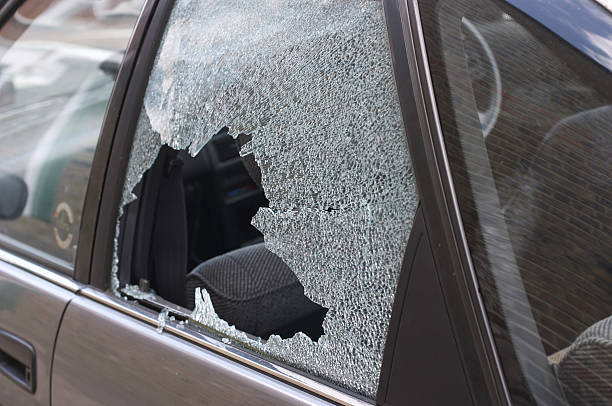Have you ever found yourself in a position requiring glass breaking for safety concerns? Perhaps you needed to flee a building or found yourself stuck in an automobile. Knowing safe glass breaker use techniques can be quite helpful in an emergency.
Glass breakers are little gadgets meant to break glass swiftly and effectively. Emergency officials, first responders, and regular people looking to be ready for unanticipated events use them. Though glass breakers are helpful, properly using them is necessary to prevent harm or injury.
Here, we will review the several kinds of glass breakers on the market and offer guidelines on properly and securely applying them in different contexts. Follow along!
Types of Glass Breakers
- Keychain Glass Breakers
These little portable instruments can be quickly fastened on a keychain. Their small form guarantees they are always within reach, perfect for daily carry. Though modest, they are quite efficient at shattering tempered glass windows.
- Hammer-style Glass Breakers
These glass breakers are sturdy, usually with a dual-ended form. One end usually includes a seatbelt cutter, and the other has a pointed metal tip for breaking glass. Their more forceful impact, made possible by their greater weight and size, makes them quite effective in an emergency.
- Spring-loaded Glass Breakers
These provide a powerful impact with little effort using a spring system. They are convenient for those who do not have the physical power to operate a hammer-style breaker properly. Pressing the tool against the glass immediately sets the spring to break the glass.
- Multi-tool Glass Breakers
These breakers are included in multi-tools and have knives, pliers, and screwdrivers, among other purposes. They are handy for daily and emergency chores since they provide flexibility and simplicity.
Using a Glass Breaker in a Vehicle
Using a glass breaker in a vehicle requires a cool, systematic approach to guarantee effectiveness and safety. First, evaluate the circumstances to ensure that using the glass breaker is safe without harming someone else or yourself. Whether the instrument is spring-loaded or hammer-style, get a stronghold.
Aim for the corner of the window, as this is the weakest part of the glass. For hammer-style breakers, swing sharply to deliver a forceful impact, while for spring-loaded breakers, press the tip firmly against the corner until the mechanism activates. Then, use the tool or another object to clean any last pieces from the broken glass to provide a safe departure point.
Using a Glass Breaker in a Building
Using a glass breaker in a building requires several important actions to guarantee effectiveness and safety. First, choose a window with the fastest and most easily accessible exit to determine the optimal escape path. Then, look for any safety risks in the area to prevent aggravating more risks before shattering the glass.
Holding the glass breaker firmly, aim for the corner of the window where the glass is weakest. Apply constant force to break the glass, whether using a spring-loaded or hammer-style breaker. After the window breaks, gently remove the last bits to provide a safe way out.
If possible, wear gloves and safety glasses to guard against sharp-edge injuries. Make sure the opening will let you pass through safely. These guidelines will help you to safely and quickly exit a building in an emergency using a glass breaker.
Using a Glass Breaker Underwater
Because of the water’s higher pressure and resistance, using an underwater glass breaker requires serenity and exact action. First, keep calm to save energy and guarantee good actions. To get leverage, firmly position oneself against a powerful section of the car or building. Aim the glass breaker at the corner of the window, as this is the weakest point.
The water resistance may make applying constant force difficult, but maintaining constant pressure is vital. As the pressure equalizes, be ready for the abrupt inrush of water once the glass breaks. Swiftly swim out of the aperture, deliberately navigating any last glass fragments to securely.
Using a Glass Breaker in Self-Defense
One last resort in self-defense is a glass breaker. Try for soft areas like the middle of the windscreen or the corners of the side windows. Holding the glass breaker tightly, use a stabbing motion toward the target area to strike powerfully. Once the glass breaks, stay far from the hazard and search for safety.
Extra Tips for Using Glass Breakers
Maximizing efficiency and avoiding damage depends on ensuring safety using a glass breaker. Start by familiarizing yourself completely with the operation manual and instructions of the tool. Keep the glass breaker easily reachable, particularly in a car, which can be important in emergencies.
Wear gloves and safety glasses to guard against risks, including broken glass shards. Evaluate the circumstances to ensure it’s safe to start any activity and that using the glass breaker won’t aggravate already present hazards. Aim for tempered glass, usually found in the side windows of vehicles, when shattering glass; avoid laminated glass, usually used in windshields, as it requires certain tools to penetrate.
Finally, aim for corners or weaker spots to enable shattering. First, give correct grasp and posture top priority in maximizing the force used on the glass. Check the glass breaker often to ensure it is in the best working order; replace it if wear or damage clearly shows.
Conclusion
A glass breaker is a crucial tool for emergency preparedness. Knowing how to use it sensibly and successfully in many contexts will increase your chances of successfully escaping a hazardous circumstance. Safety always comes first, so follow the correct procedures and ensure your glass breaker is readily available and in good operating shape.
